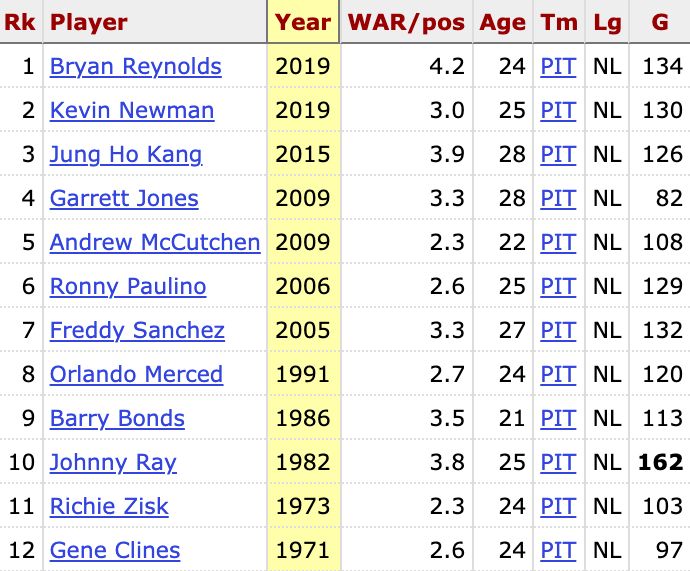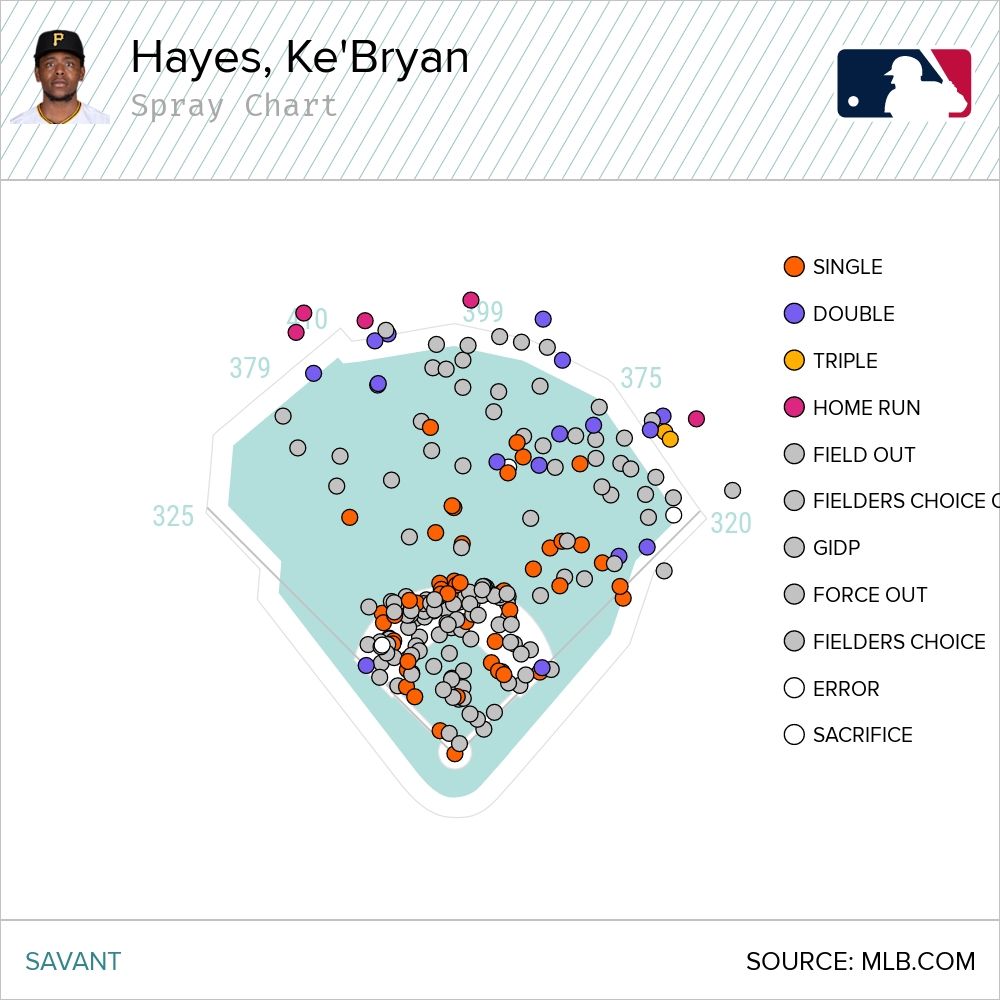The Pirates are a team that have more than a handful of holes at the major league level that need to be filled. While they can be patient for some, letting prospects develop or experiment with other players in new roles, others are going to need to be addressed and have a plan in place for 2022.
Put “find a leadoff hitter” in the latter category.
For four months, the Pirates were spoiled by Adam Frazier in the top spot, giving a struggling offense at least one of the best leadoff hitters in the game for four months. Since then, they’ve cycled different players at the top of the order, to mixed results.
Ben Gamel has had the most reps in that role since Frazier’s trade with 54 plate appearance, and while a 103 wRC+ and 25.9% strikeout rate aren’t great, the .370 on-base percentage is what teams are looking for in that role. Hoy Park has had almost as much time up top (51 PAs), but his .217/.280/.326 slash line wasn’t cutting it. He is still a rookie though, and the jump to the majors is tough. Obviously there’s no reason to write him off now.
Only three other players have had at least 10 plate appearances batting first over these past seven weeks: Kevin Newman and Cole Tucker (both of whom have the speed you would like in that role but have not gotten on base consistently enough for the job) and Ke’Bryan Hayes. Hayes has actually become the regular there over the past week.
“The thought was getting him [more] at-bats, get him going a little bit,” Derek Shelton explained recently. “... Nothing scientific behind it. I thought it would be a good idea.”
So far, the experiment has gone well. Hayes is hitting .345 in his 32 trips to the plate in that role with a .375 OBP. Of those 10 hits, only one went for extra-bases, but if the goal of the leadoff man is to get on base, he’s done that very well through this first week in that new role.
And a walkoff Friday with two outs in the ninth -- a situation that wouldn’t have happened if he batted in his normal No. 2 spot -- is a nice affirmation, too.
YOUNG HAYES CALLS GAME!!!#WALKOFF #RAISEIT pic.twitter.com/hVcEQ49Lj0
— Pittsburgh Pirates (@Pirates) September 11, 2021
“In the leadoff spot, I feel like my first at-bat, I know I'm going to get a lot more heaters, so [I’m] just being more aggressive,” Hayes said on what his approach is in that new spot.
This week has been a nice stretch for the Pirates’ prized rookie, who has been up and down at the plate this season. The defense has been as advertised, and with it, he has been worth 2.2 WAR over 84 games this season.
For comparison, here are the Pirate rookies over the past 50 years who have been worth more WAR than that, per Stathead:

That’s in roughly half a season’s worth of games too and ignoring that Hayes missed two months due to a wrist injury. No, he hasn’t been able to capture that September magic this year, but it’s still a fine first full season in the majors.
Still, his .255/.323/.371 slash line pales in comparison to last year, where his September slugging percentage (.682) almost matches this year’s OPS. Looking at his peripherals, most of them are encouraging. His 90.1 mph average exit velocity is down from last season, but it’s still in the 65th percentile, and he averages hard contact in the 73rd percentile. Both of those marks are good, especially when matched with a low whiff rate and fairly average walk and strikeout rates. You can do a lot worse as a rookie than making consistent hard contact.
But there’s the launch angle problem. His batted balls have an average launch angle of just two degrees. Of the 230 hitters across baseball with at least 200 batted balls, that average is the third-lowest.
And if you’ve been watching how Hayes has been driving the ball this year, you can probably guess where the heart of that problem lies. Here are his average launch angles based on batted ball direction:
Opposite: 13 degrees
Straightaway: 0 degrees
Pulled: -9 degrees
Average launch angle is a bit of a tricky stat because higher doesn’t always mean better (a bunch of pop ups would get the average up but are fundamentally worthless), but looking at his batted ball chart, it’s pretty clear. Almost all of his fly balls are to the right side of the diamond:

He hasn’t hit a single fly ball or line drive down the left field line. Almost all of his pull hits are ground balls. Sure, they’re burners and more than a handful are base hits, but he’s not utilizing one-third of the diamond.
And when he’s trying to take pitches like this the other way:
It's going to create weak ground outs. You can’t go to the opposite field with that. The only way to hit a high-90s fastball on the hands is to get the head of the bat out in front and pull it. It’s a part in his game he doesn’t have right now.
“The focus of his approach and the direction of his swing is something that’s lined up to drive the ball the other way,” Shelton said. “I think it’s one of the things that we’ve talked about is you can really mature into pulling the baseball and pulling the baseball the right way. I think that’s just going to be another step in his process. It’s a lot easier to go from the opposite side to the pull side than it is to get a guy back to the opposite side.”
I asked Shelton if he had a hitter that had to learn that process to pull the ball. He had: Grady Sizemore. Sizemore went on to be one of the league’s best players for a four-year stretch from 2005-2008 after he started getting the head of the barrel out in front. It can be done.
The opposite field drives show that Hayes can be a complete hitter, once he starts driving balls to left. Perhaps the leadoff spot and knowing he can hunt fastballs early can help.

